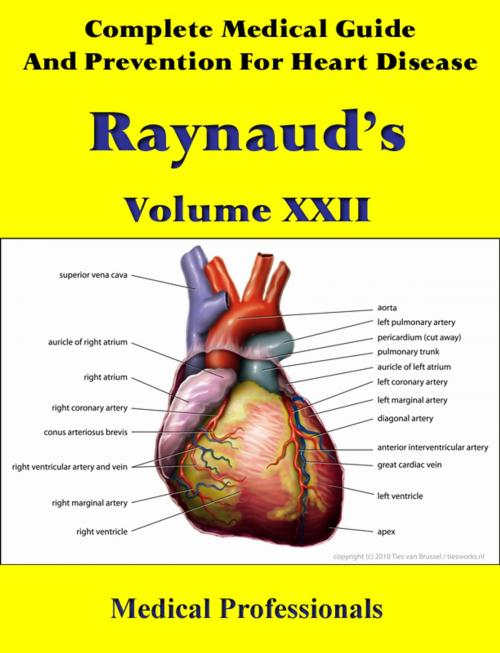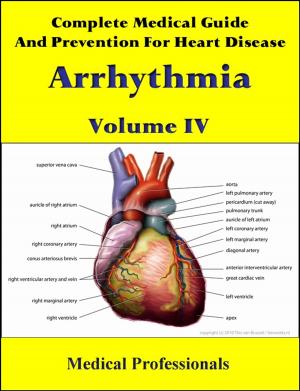A Complete Medical Guide and Prevention For Heart Diseases Volume XXII; Raynaud’s
Nonfiction, Health & Well Being, Health, Ailments & Diseases, Heart, Health Care Issues| Author: | Medical Professionals | ISBN: | 1230000037227 |
| Publisher: | MedHealth | Publication: | December 6, 2012 |
| Imprint: | Language: | English |
| Author: | Medical Professionals |
| ISBN: | 1230000037227 |
| Publisher: | MedHealth |
| Publication: | December 6, 2012 |
| Imprint: | |
| Language: | English |
In medicine, Raynaud's phenomenon (play /reɪˈnoʊz/) is a vasospastic disorder causing discoloration of the fingers, toes, and occasionally other areas. This condition may also cause nails to become brittle with longitudinal ridges. Named after French physician Maurice Raynaud (1834–1881), the phenomenon is believed to be the result of vasospasms that decrease blood supply to the respective regions. Stress and cold are classic triggers of the phenomenon.
It comprises both Raynaud's disease (also known as "Primary Raynaud's phenomenon") where the phenomenon is idiopathic, and Raynaud's syndrome (secondary Raynaud's), where it is caused by some other instigating factor, most commonly connective tissue disorders such as systemic lupus erythematosus. Measurement of hand-temperature gradients is one tool used to distinguish between the primary and secondary forms.
In extreme cases, the secondary form can progress to necrosis or gangrene of the fingertips.
Raynaud's phenomenon is an exaggeration of vasomotor responses to cold or emotional stress. More specifically, it is a hyperactivation of the sympathetic nervous system causing extreme vasoconstriction of the peripheral blood vessels, leading to tissue hypoxia. Chronic, recurrent cases of Raynaud phenomenon can result in atrophy of the skin, subcutaneous tissues, and muscle. In rare cases it can cause ulceration and ischemic gangrene.
One of the most famous victims of Raynaud's Syndrome was Essad Bey (Lev Nussimbaum), immortalized in Tom Reiss' biography of his life, The Orientalist.
In medicine, Raynaud's phenomenon (play /reɪˈnoʊz/) is a vasospastic disorder causing discoloration of the fingers, toes, and occasionally other areas. This condition may also cause nails to become brittle with longitudinal ridges. Named after French physician Maurice Raynaud (1834–1881), the phenomenon is believed to be the result of vasospasms that decrease blood supply to the respective regions. Stress and cold are classic triggers of the phenomenon.
It comprises both Raynaud's disease (also known as "Primary Raynaud's phenomenon") where the phenomenon is idiopathic, and Raynaud's syndrome (secondary Raynaud's), where it is caused by some other instigating factor, most commonly connective tissue disorders such as systemic lupus erythematosus. Measurement of hand-temperature gradients is one tool used to distinguish between the primary and secondary forms.
In extreme cases, the secondary form can progress to necrosis or gangrene of the fingertips.
Raynaud's phenomenon is an exaggeration of vasomotor responses to cold or emotional stress. More specifically, it is a hyperactivation of the sympathetic nervous system causing extreme vasoconstriction of the peripheral blood vessels, leading to tissue hypoxia. Chronic, recurrent cases of Raynaud phenomenon can result in atrophy of the skin, subcutaneous tissues, and muscle. In rare cases it can cause ulceration and ischemic gangrene.
One of the most famous victims of Raynaud's Syndrome was Essad Bey (Lev Nussimbaum), immortalized in Tom Reiss' biography of his life, The Orientalist.















